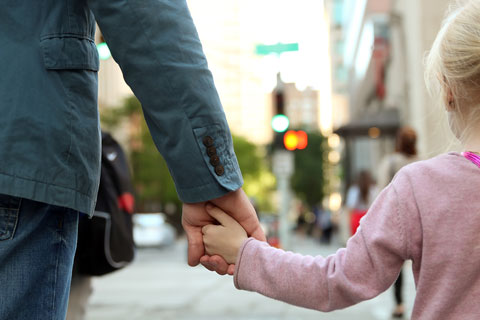“Where’s my new preschool?” “What does ‘prairie’ mean?” Children’s natural curiosity about places is the basis for learning about geography. Here are some tips to support young children as they express beginning geographic thinking and learn to locate objects and places in familiar environments.
Explore the neighborhood.
Preschoolers and babies learn from watching the world, especially if you talk with them about it. “That’s a noisy red truck!” “Mm, do you smell that bread baking?”
Help preschoolers predict what they might notice on a walk.
Make a list and take it along, adding to it as you go. What animals, plants, machines, or buildings do they see? What sounds and smells do they notice? They can sketch what they see, if time permits, or take photographs. Later, they can build models or make a book of drawings to share with their families. Or they can create a mural of the neighborhood.
Encourage children to talk about what they see.
If you describe places precisely, children learn to focus on details too. When they are very young, start using words that describe direction and position (“above,” “left,” etc.). Children also need terms for natural features like “hillside” or “beach” and words for colors, temperatures, sizes, and shapes. This vocabulary is useful on walking trips: “Turn left at the big tree!”
Ask children to collect things to document the trip.
Business cards, fliers, leaves, seeds, and rocks are items you might collect on a walk through the neighborhood. Resealable bags or “fanny packs” are handy for carrying specimens. The children can make displays of what they have collected.
Invite children to investigate transportation.
How do people, things, and ideas get from place to place in the neighborhood-by road, trail, railroad, waterway? What kinds of vehicles are used? Where are they going? Blocks, small wheel toys, and materials such as sand or water allow children to play with geography.
Let children experience the tools of geography.
Maps, a sturdy compass, and measuring devices are useful for young children. They won’t fully understand these tools yet, but they can begin to learn their uses. Display a laminated map on a tabletop. Use it to show how the map represents rivers, mountains, towns, and highways. Children might want to trace the map, copy it, or just take a look.
Read picture books with geographic themes.
They can spark discussions of how other places are like, and different from, the neighborhood.
Plan walks throughout the year.
Children can keep track of ways the neighborhood changes through the seasons. They might do an in-depth study of a park or a business. Children can do observational drawings of signs and logos they see. Encourage children to create and use maps of places in their neighborhood.
IEL Resource
- Resource List: Teaching Geography


 PDF
PDF